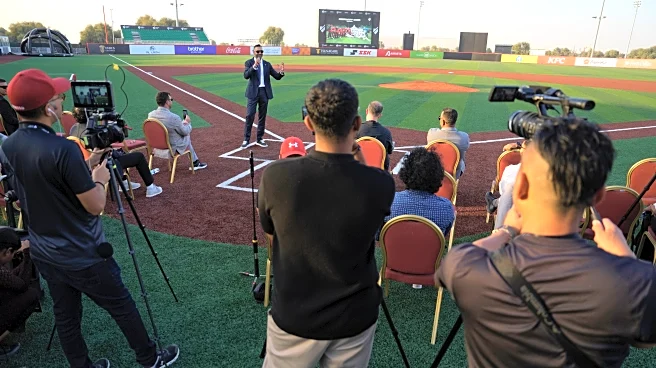What's Happening?
A study conducted by researchers from the U.S. and India has found that heavy rains and standing floods in Mumbai are responsible for over 8% of deaths during the monsoon season, with slum dwellers being
the most affected. The research, published in the journal Nature, analyzed data from 2006 to 2015 and highlighted that slum areas, due to their low-lying and flood-prone locations, experience significantly higher mortality rates compared to non-slum areas. The study noted that a day with 150mm of rainfall results in a 2.9% increase in five-week mortality for slum residents, compared to a 1.2% increase for those in non-slum areas. The research also pointed out that children under five and women are particularly vulnerable, with waterborne diseases like diarrhea being prevalent.
Why It's Important?
The findings underscore the urgent need for targeted infrastructure and policy interventions to address the vulnerabilities of slum dwellers in Mumbai. The economic impact of these monsoon-related deaths is estimated at $1.2 billion, highlighting the significant burden on the city's resources. As climate change is expected to exacerbate these conditions, with predictions of increased rainfall and rising sea levels, the study calls for immediate action from policymakers to improve drainage systems and healthcare access. Failure to address these issues could lead to a 20% increase in rainfall-linked deaths over the next decade, emphasizing the critical need for sustainable urban planning and disaster management strategies.
What's Next?
The study suggests that if sea levels rise by 5 cm, the mortality rate due to rainfall could increase to 9.1%, and a 15 cm rise could push it to 10%. This projection highlights the necessity for local governments to implement effective measures to mitigate the impact of climate change. Policymakers are urged to use the study's data to prioritize investments in infrastructure and healthcare to safeguard vulnerable populations. The research advocates for a collaborative approach involving government bodies, urban planners, and community organizations to create resilient urban environments capable of withstanding future climate challenges.
Beyond the Headlines
The study not only highlights the immediate health impacts of monsoon floods but also points to broader socio-economic disparities in urban areas. The disproportionate impact on slum dwellers reflects systemic issues related to housing, sanitation, and access to resources. Addressing these underlying factors is crucial for achieving long-term resilience and equity in urban development. The research also serves as a call to action for global cities facing similar challenges, emphasizing the importance of integrating climate adaptation strategies into urban planning to protect vulnerable communities worldwide.













